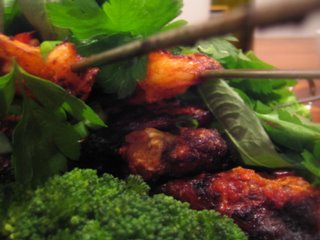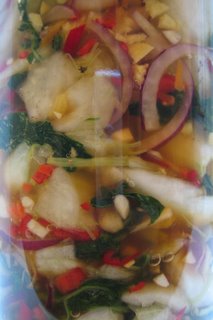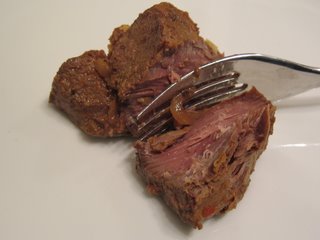The blueprint for the custard I make is to use 100mL of milk to each egg. Adding sugar to taste at approximately 1 teaspoonful per egg. Beat the eggs and sugar then pour the warmed milk into the egg mixture, beating as you go. Pour through a sieve (to catch the solid eggy bits) into a pan and stir well over heat until thickened. The amount of heat and dedication to the stirring depend on your levels of confidence, which in turn depend on many things like your mood and the colour of the sky. On a usual day I actually turn the heat to medium high, stirring dedicatedly, to make a fairly quick custard. I realise that this is probably not the way I should do it. It is probably best to start low and stir well.
From there the variations can begin.
- The basic vanilla custard is best made by infusing the milk with a split vanilla bean. For two of us I usually use 200mL of milk and bring to the boil with half a vanilla bean split in half. Then leave the milk to infuse for 30 minutes or so then strain the milk from the bean onto the beaten eggs and sugar. Otherwise you can add a splash of vanilla essence.
- A richer custard is made simply by substituting part or all of the milk with cream.
- A wonderful and different variation from Nigella Lawson involves infusing the milk with a bashed stalk of lemon grass. The mixture is sweetened with a simple syrup infused with lemongrass. Very nice and quite a curious taste.
- This same blueprint can be used for a baked custard. Pour the mixture into an oven proof dish, stand in a larger dish, place in a 180°c oven, pour warm water into the outer larger dish to half way up the inner dish and bake for approximately 20 minutes (for a small amount) or until it is set but not stiff.
- Coating the dish in which you bake the custard in caramel before pouring in the custard mixture produces crème caramel, perhaps my favourite dessert ever!
- A custard tart is as easy as pouring the custard mixture into prebaked shortcrust tart case and baked at 160°c for approximately 30 minutes, again until it is set but not stiff.
- Nutmeg adds a lovely flavour, especially to a baked custard.
- Of course, baked custard lends itself to individual portions with the use of small ramekins.
May I invite you to have a look at the current Foodography challenge Hot! to which I submitted a photo of the custard cooking hotly?





